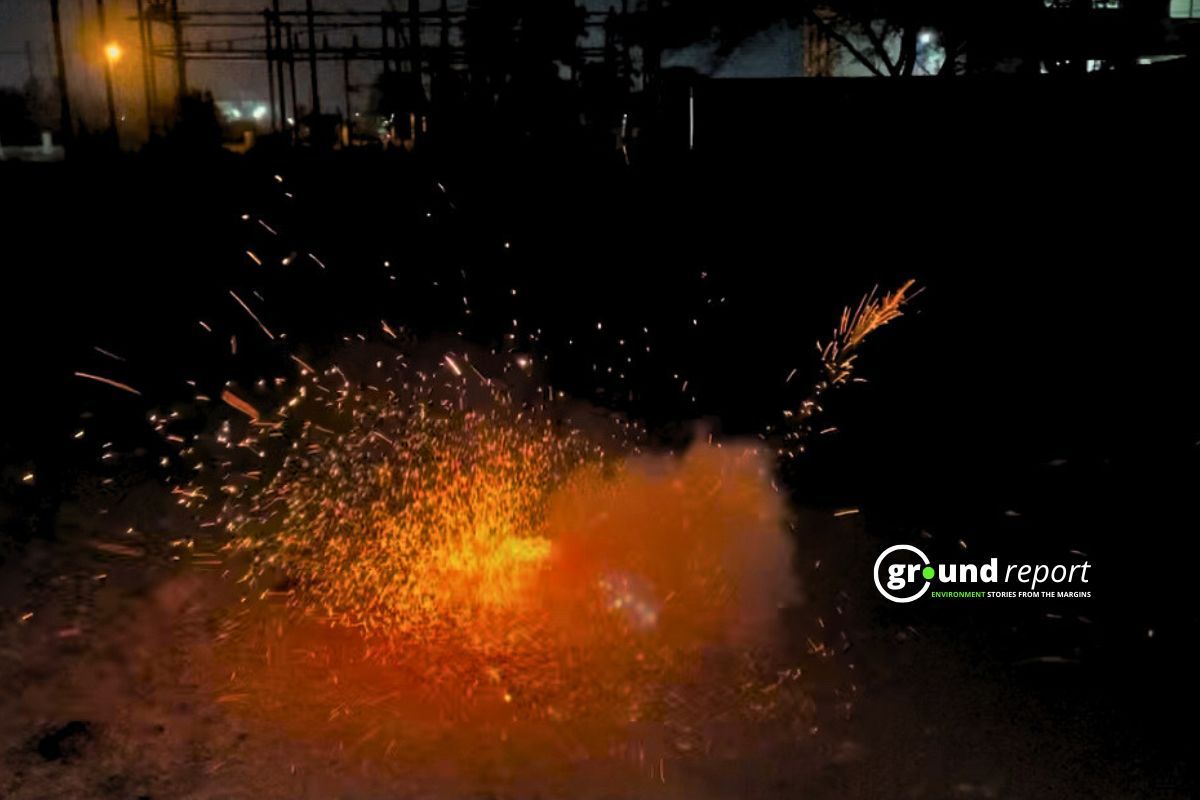Wadda Mal is a village under Temni Sahni Gram Panchayat in the Pandhurna district of Madhya Pradesh. The village is a part of Madhya Pradesh bordering Vidarbha of Maharashtra. The Vidarbha region of Maharashtra is infamous for its water crisis due to irregular rainfall and climate vulnerability. This has led to water scarcity, crop losses, and farmer suicides.
One afternoon in February, though it was only the early days of spring, the heat here felt as intense as late April in Bhopal. While rising temperatures played a role, an even greater concern was the village’s worsening water shortage. Sitting on the verandah of her concrete house, Pikola Pandre narrates her village’s water woes.
“Aamhale pani aanun dya, panyache lay dikkat aahe, mag kahi dikkat nahi”
Meaning “Bring us water, there is a great shortage of water, then there is no problem.”
Pandre belongs to the Gond tribal community. She is unsure of her exact age but estimates she is around 65. The deep wrinkles on her face and body bear testimony to the passing years. As she speaks, she paints a picture of life in her village.
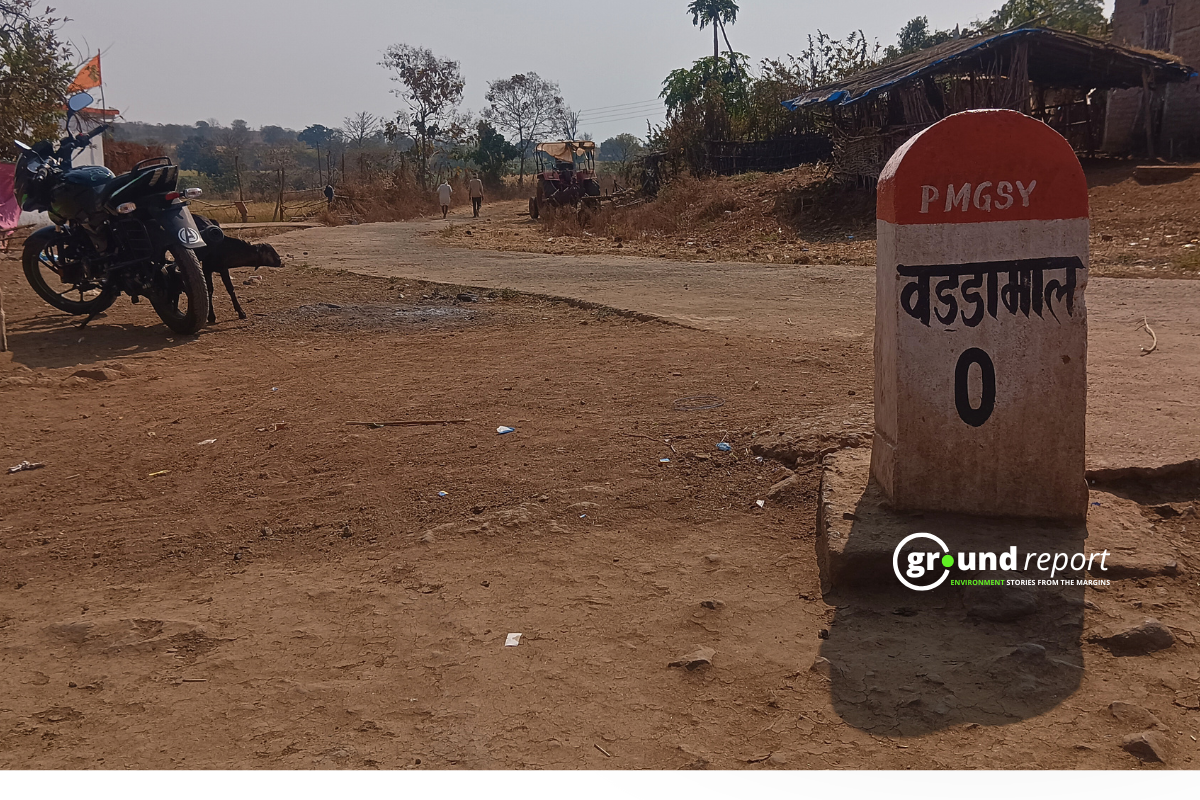
Water scarcity kicks in early
The village began experiencing a water crisis as early as January. The situation has become so severe that water tankers arrive only once every eight days. Frustrated by the shortage, the villagers, along with the Sarpanch (village head), recently submitted a memorandum to the local Naib Tehsildar, addressing it to the Collector.
Pandre has spent most of her life in this village. She recalls being married here at a very young age. Describing her age at the time, she says,
“Back then, I didn’t understand anything. I couldn’t even tie a sari or a lugda.”
Her struggle with water began early. With a hand gesture, she indicates that she hadn’t even started menstruating when she had to walk 2 kilometers in the middle of the night to fetch water.
Over the years, much has changed in her life. She once lived in a kutcha house, but now she resides in a pucca house with her younger son, daughter-in-law, and their two children.
Although there is a hand pump in front of her house, it runs dry. At her age, Pandre no longer fetches water herself—her daughter-in-law now takes on the task. While many things have changed over the years, the village’s water crisis remains the same.
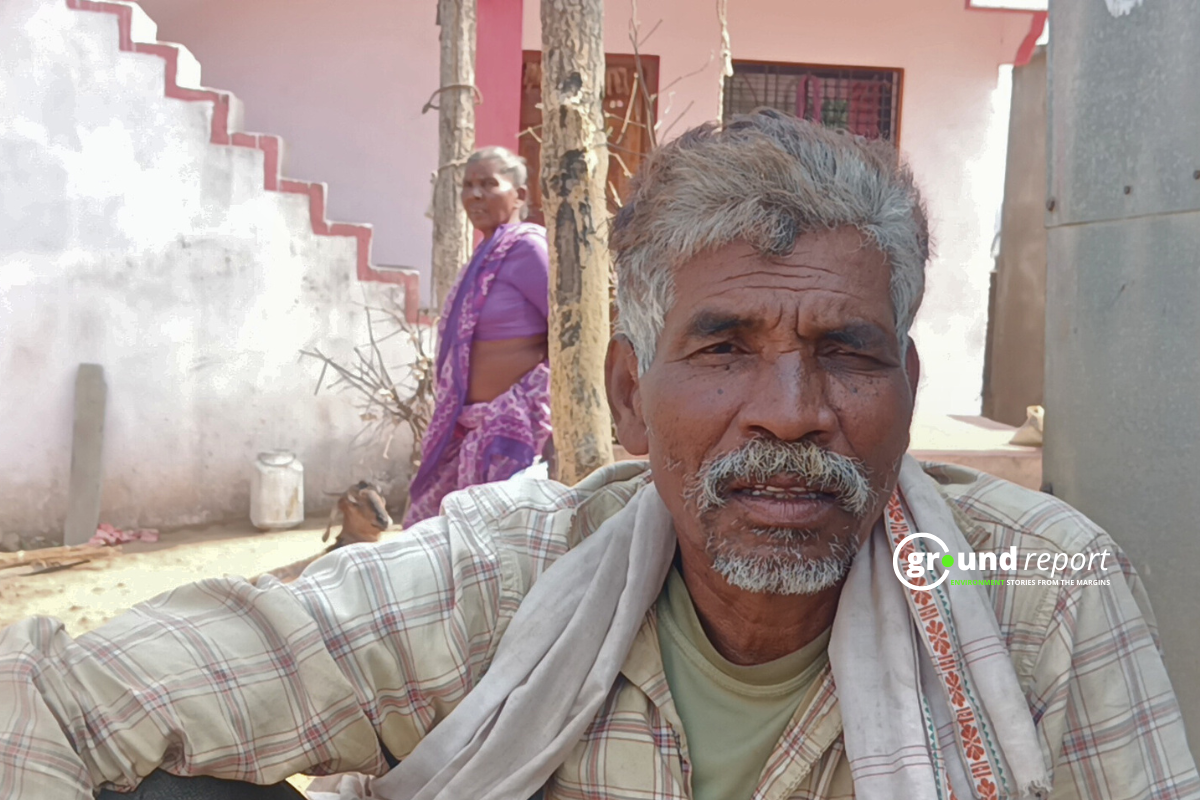
Pushed to brink
In Wadda Mal, many farmers who once relied solely on farming for their livelihood have turned to odd jobs to make up for the losses from their crops. Due to insufficient irrigation and poor crop yields, many have been forced to take up agricultural labor to support their families.
One such farmer, Tejrao Bhalavi, owns around three acres of land. During the last Kharif season, he planted soybeans, but limited water availability resulted in a poor harvest. Bhalavi’s family, consisting of his son, daughter-in-law, and grandchild, struggles to survive on farming alone. To make ends meet, his son and daughter-in-law travel to nearby villages to work as cotton pickers.
According to the 2011 census, Wadda Mal is a village of 65 families in which 293 people live. Out of these, 274 people belong to the tribal community. Bhalavi says that most of the people of the village are dependent on labour for their livelihood. He shares,
“In the morning two vehicles came to fetch laborers and took them away, so the village is empty.”
First come, first served
Speaking to Ground Report Bhalavi shared that the village relies on two Panchayat-owned wells as the sole water source for all households. Meanwhile, medium and large landholding farmers have dug tube wells to irrigate their fields. However, farmers like Bhalavi depend entirely on the village wells for irrigation. As a result, these wells often dry up during the Rabi season, worsening the water crisis.
In such conditions, Bhalavi’s family faces the same water struggles as Pandre. He explains that every morning at 4 AM, villagers set out for a nearby village to fetch water. When asked why they leave so early, he simply says,
“Those who go late won’t get any water.”
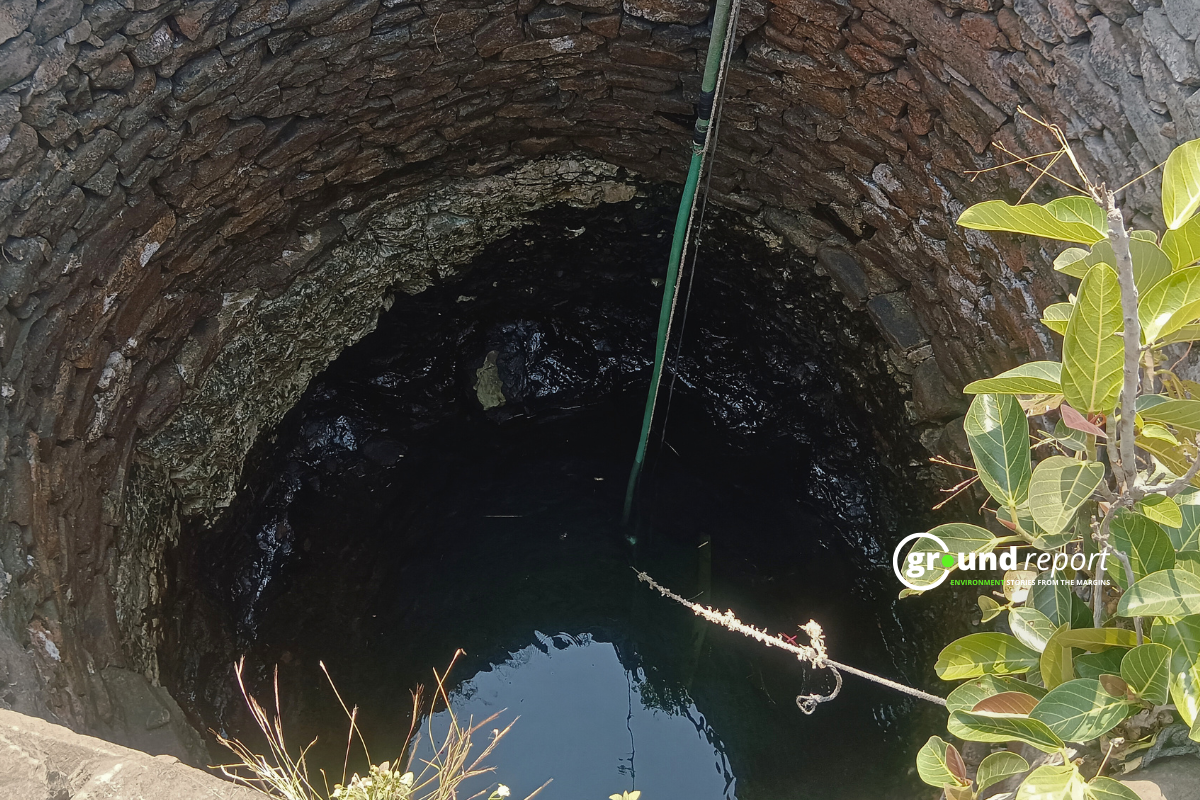
Shridas Pandre, the village’s upsarpanch, leads us to the government well. This well, approximately 40 feet deep, is located barely a kilometer from Pikola’s house.
Along the way, we pass a broken hand pump, a wheat field, and a seasonal water drain. Shridas explains that while this drain carries water during the monsoon, it dries up soon after. However, it temporarily boosts the groundwater level, allowing farmers to irrigate their fields using tube wells until mid-December.
Farming struggling with water shortage
An elderly farmer standing near the Panchayat well shares that his three-acre wheat crop is also irrigated during this period. However, when asked about the yield, he admits it is minimal.
“Sometimes we get one or two sacks, and sometimes there’s no harvest at all,”
In 2023, Pandhurna became a new district by separating from Chhindwara district. According to the Agriculture Contingency Plan of Chhindwara, wheat is the main Rabi crop of this region. Wheat is produced in 60.4 thousand hectares of Chhindwara district (2013).
Wheat appears to be the preferred crop among farmers in Wadda Mal, as most fields are covered with it. However, wheat is a water-intensive crop, requiring 871 cubic meters of water to produce just one ton. This further exacerbates the village’s ongoing water crisis.
When asked why local farmers don’t opt for less water-intensive crops, Shridas explains,
“Most farmers grow crops primarily for their consumption and sell whatever surplus they have. Wheat sells quickly, so they prefer not to grow anything else.”
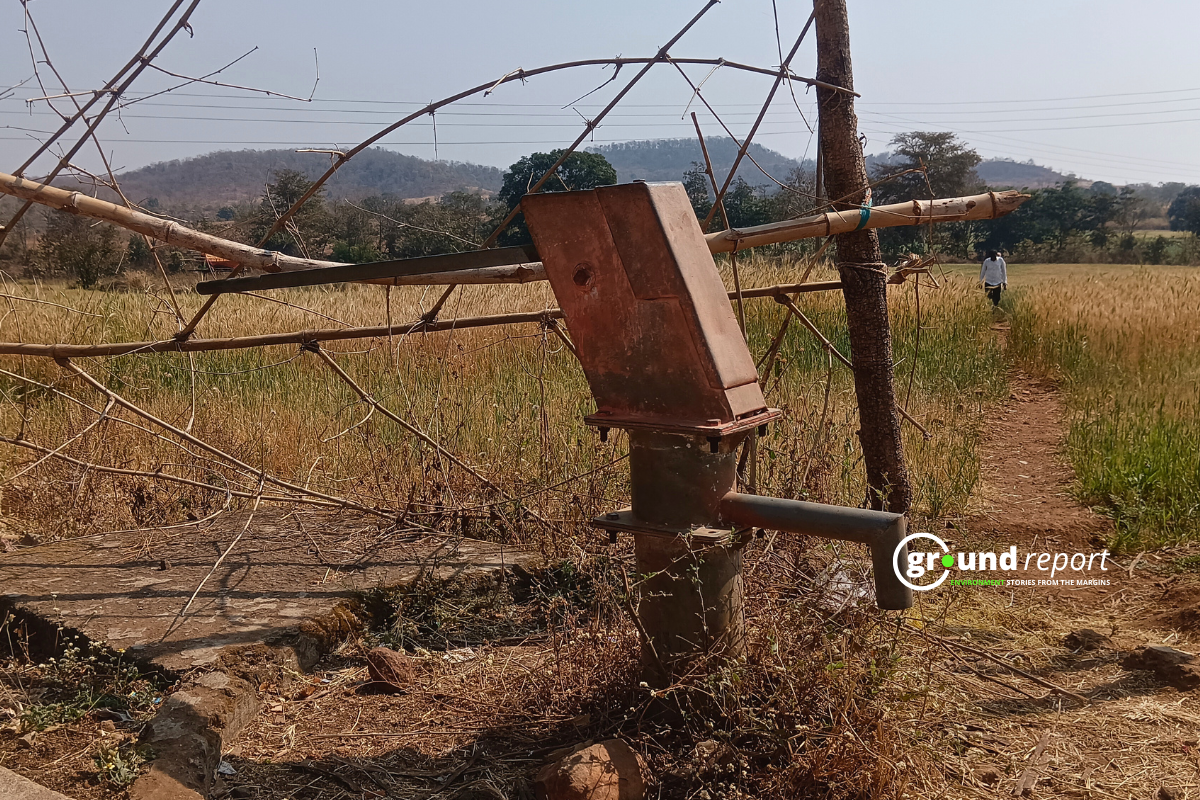
Talking about the water crisis in the village, Sridas says that the Panchayat has requested the Public Health Engineering (PHE) Department of the district several times to arrange for water in his village. The villagers believe that the department should arrange for water from the Temni dam located about 2 km from the village. A person from the Panchayat, on the condition of anonymity, says that the PHE department has asked to provide a pipeline till the nearby village Rayatwadi, but from there to Wadda Mal, the Panchayat will have to lay the pipeline at its own expense.
The Panchayat says that they have a shortage of funds, due to which they are not able to do so. At the same time, according to the data of Jal Jeevan Mission, tap connections are available in all 116 villages of Temni Sahni Gram Panchayat. Whereas Bhalavi says that there is a tap in the house but there is no water in it.
Drinking water for the village’s five mohallas is sourced from the Gram Panchayat well, with Deputy Sarpanch Shridas Pandre overseeing its distribution. He explains that electricity is available in the village from 10 AM to 4 PM, during which he operates the motor installed in the well to supply water.
According to a joint report of UNICEF and the World Health Organization, about 18 lakh (1.8 million) people live in such houses where there is no water supply. In 7 out of 10 such houses, the task of fetching water falls on the responsibility of women. According to an estimate, the time spent by Indian women to fetch water every year is equal to about 15 crore days. Putting it more simply, villagers here spend around 6 hours daily to fetch drinking water.
But Shridhar Pandre says that now times have changed.
“Now even men fetch water by bullock cart and motorcycle.”
But a large part of Picola Pandre’s 65 years of experience includes memories of walking long distances with a water pot on her head. Now the task of fetching water is the responsibility of her daughter-in-law. Both Pandre and her daughter-in-law are tribal women. It is important to mention this because, in India, women of lower castes have to shoulder the responsibility of walking a long distance to fetch water. For this, they sometimes even go to inaccessible water sources.
Picola Pandre’s life has been defined by the struggle to access water, and this battle continues today. However, she hopes future generations won’t face the same hardships. The government has committed to providing tap water to every household under the Jal Jeevan Mission, with the deadline extended to 2028. In the recent budget, Rs 67,000 crore was allocated for this initiative. Yet, according to official records, while the tap is supposed to have reached Picola’s house, the water remains absent.
Support us to keep independent environmental journalism alive in India.
More Video Reports
Dry canals leave Rajgarh farmers without irrigation water
Biaora battles severe sanitation issues, residents demand action
Budhni’s wooden toy makers: a tale of lost dreams
Mission aatmanirbharta in pulses: MP farmers remain skeptical
Follow Ground Report on X, Instagram and Facebook for environmental and underreported stories from the margins. Give us feedback on our email id greport2018@gmail.com.
Don’t forget to Subscribe to our weekly newsletter, Join our community on WhatsApp, and Follow our YouTube Channel for video stories.


